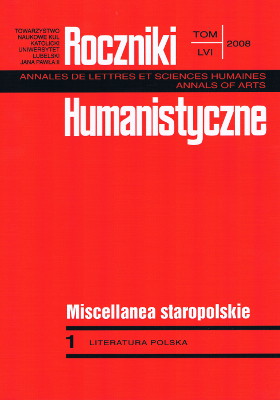Energeia, ingenium and the Aristotelian Concept of Movement
Abstract
The category of “energeia” was an essential concept of seventeenth-century aesthetics and poetics. It has its source in Aristotle’s philosophical and rhetorical writings. In his “Physics” and “Metaphysics” it is an elementary component of the conception of movement understood as a transition from potentiality to act, in opposition to the category of “dynamis” defined as act, action, and realisation of potentiality. In the Rhetoric and Poetics it becomes an element of the theory of metaphor, and means the vividness of style accomplished by means of the presentation of reality in motion and the presentation made visible (pro ommaton poiein). The formation of metaphor in Stagirite’s theory depends on poetic talent (eufuia) and mental acuity (aghinoia). In the sixteenth century, the Italian translators and commentators of Aristotle Lodovico Castelvetro and Alessandro Piccolomini combined the origin of metaphor with the action of the rapid and acute ingenium, and they defined “energeia” as the presentation of movement and action. The categories of movement and “energeia”, together with the creative “ingenium” related with movement, play a very essential role in the baroque theory of concept and metaphor. In the writings of the theorists of concepticism, Emanuel Tesaur and Baltasar Gracián, also Matteo Peregrini, the expression of movement, the concepts of energy and agility, also rapidity, swiftness, and acuity of “ingenium” are categories that determine the effectiveness of metaphor and of the process of persuasion. The baroque poetics of concept, especially in Tesaur’s version, draws on Aristotle’s theory, but he transforms and reinterprets it, adjusting the Aristotelian concept to new aesthetics.
Copyright (c) 2008 Roczniki Humanistyczne

This work is licensed under a Creative Commons Attribution-NonCommercial-NoDerivatives 4.0 International License.





